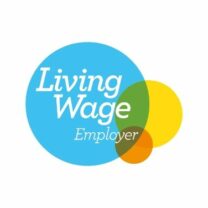In this article, Kevin Clarke, Account Delivery Manager at Procure Plus, provides an overview of the new draft guidance for the Social Housing Decarbonisation Fund (SHDF) Wave 3, detailing key improvements, requirements, and opportunities for landlords to contribute to the net zero transition
The recent publication of draft guidance for Social Housing Decarbonisation Fund (SHDF) Wave 3 represents another important milestone on the road to net zero.
The new draft specification shows some welcome improvements from the previous two waves, demonstrating that the feedback that we have collectively provided as a sector has been taken on board.
Applications are not yet open, but with DESNZ encouraging potential applicants to start preparing as soon as possible, what do landlords need to know about Wave 3?
Time will be of the essence
SHDF Wave 3 projects will continue to be delivered until 30 September 2028. However, all grant funding must be allocated to the recipient and spent by 31 March 2028, meaning that for the remaining 6 months of the scheme, only co-funding can be used.
Even more significantly, 40% of grant funding will need to be spent in Year 1, so it’s really important to think about your procurement and hit the ground quickly.
The draft guidance also states that grant funding must be spent in the year it is allocated, so a well-organised and coordinated approach is critical. We will be drawing on our experience across the country in the first two waves to help organisations to navigate these challenging timescales.
New rules for the biggest and smallest bidders
The new wave will see the creation of a “Strategic Partnerships” route. This will allow a small number of recipients with a proven track record at scale to deliver thousands of upgrades with a reduced level of bureaucracy.
Through our work with combined authorities, we have seen the benefit of delivery at scale, and with a raft of new Mayoralties created in the past few months alongside strategic partnerships, there will be further opportunities for collaboration.
At the other end of the spectrum, for the first time, smaller landlords who own or manage fewer than 1000 homes will be able to apply for funding for fewer than 100 homes.
For these registered providers, there will be no minimum application size. However, the guidance states that “we expect such landlords to try to reach 100 homes or to join a consortium where this is not possible.”
We understand that the prospect of bidding for funding through this pathway may feel daunting for organisations with smaller teams.
At Procure Plus, we have decades of experience in bringing landlords together to enjoy the benefits of operating at scale. We see SHDF Wave 3 as a really vital opportunity for smaller landlords to tackle some of their more challenging properties and deliver tangible benefits for residents.
New single cost cap
Wave 3 introduces a new, standardised cap for energy efficiency measures, departing from the previous approach where the cap varied based on the starting EPC band or wall type. Under Wave 3, the cost cap is set at £7,500 of SHDF grant funding per home.
An additional £7,500 is available for low-carbon heating measures in homes not connected to the gas grid. This is in addition to the baseline cap of £7,500 and can be averaged across multiple homes.
Consequently, applicants can receive a total of £15,000 in SHDF grant funding from the Government for off-gas homes, divided equally between energy efficiency measures and low-carbon heating.
Gas Grid Incentive
Another new innovation is that up to 10% of homes in an application can access a grant fund of £20,000 per home if they are on the gas grid, to be used to install low-carbon heating measures such as heat pumps and heat networks.
It is also significant that in these cases, the entire amount will come from SHDF funding, so there is no co-funding requirement.
Navigating New Procurement Regulations
In addition to the changes from previous schemes, Wave 3 will also be the first under the new Procurement Regulations, which presents both challenges and opportunities.
We are committed to supporting smaller landlords, who are unlikely to have a large in-house procurement team in navigating these changes. By offering tailored guidance and robust frameworks, we can help ensure that all RPs, regardless of size, can successfully access and utilise SHDF funding.
Conclusion
The Social Housing Decarbonisation Fund has transformed thousands of properties, contributing to the net zero transition but more importantly, ensuring that more people can live in homes that are efficient, comfortable and affordable to heat.
However, the first two waves have not been without their challenges, leading to the funding targets being missed on both occasions.
We are passionate about ensuring that registered providers can access and utilise this funding to transform homes and improve lives.
Our message is simple – the timescales and administrative burden may appear daunting, but you do not have to navigate this process alone.
Procure Plus is a Housing Digital Stakeholder and a social housing regeneration consortium that generates efficiencies by leveraging the procurement of construction materials and contractors.
Kevin Clarke will be speaking at our upcoming online micro-conference, ‘Retrofit & Sustainability – Homes Fit for the Future Right Now’, on Wednesday 5th June. Kevin will share practical experiences from SHDF 1 and 2, LADS, Sustainable Warmth, and HUG2, addressing the skills shortage, and discussing market evolution. Looking ahead, he will provide insights into SHDF 3 and LARS, highlighting future decarbonisation efforts. Click here to register for free.
Image: Sutthiphong Chandaeng/Shutterstock
Need help, advice or support?
Call us right now on:
Alternatively, schedule a call or meeting with one of our team
We have a team of experts ready and waiting to talk you through any queries you have, whether you’re a new or existing customer.







